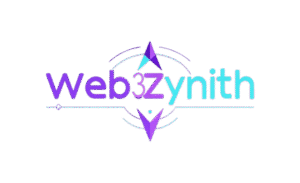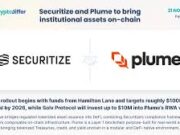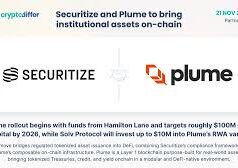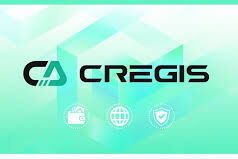Tether, which issues the stablecoin USDT, has recently made some striking announcements. According to Tether CEO Paolo Ardoino, USDT serves nearly 500 million users and has achieved a 99% profit margin. In addition, the market cap of USDT is said to be about US$170.86 billion, with a daily trading volume of roughly US$45 billion and some 17 million daily traders. Moreover, Tether reportedly holds a large amount of U.S. Treasuries, such that if it were a country, it would rank among the top holders. But while many of these numbers are supported by recent attestation reports, others are less clear or unverified.
Below, I walk through what is confirmed, what is disputed, what those numbers mean, and why this matters — especially for investors, crypto users, regulators, and anyone interested in stablecoins.
What Is Confirmed
First and foremost, some claims are backed by recent data and reputable sources:
- Market Cap & Profit Margin
- U.S. Treasuries Holdings
- Tether has declared holdings of approximately US$97.6 billion in U.S. Treasuries in its attestation report for the first half of 2024. (Investopedia)
- According to academic research, by Q1 2025, Tether directly held about US$98.5 billion in U.S. Treasury bills, representing roughly 1.6% of all outstanding Treasury bills. That places it among the larger non-sovereign holders globally. (arXiv)
- Profit Figures (Recent Past)
- In 2024, Tether reported profits of more than US$13 billion. (The Economist)
- In the first half of 2024 alone, profit was about US$5.2 billion. (Investopedia)
These figures are meaningful because they show that Tether remains a dominant stablecoin player, with deep liquidity, large reserves, and growing profitability.
What Is Less Certain or Unverified
However, several statements made in the recent announcements are not fully corroborated by public data. It is important to distinguish what has been clearly documented versus what remains speculative or promotional.
- Nearly 500 Million Users
The claim that USDT has nearly 500 million users has not yet been independently verified in publicly available attestation reports or by third-party aggregators. Many sources suggest Tether currently has “more than 400 million users,” but reaching 500 million is likely a projection or near-term target rather than a confirmed statistic. (FN London) - 17 Million Daily Traders
The idea that there are 17 million daily traders using USDT is bold, but no recent reliable data supports that exact number. While trading volumes and active addresses are often reported, “daily traders” is a more ambiguous metric (does this count all wallets, exchanges, etc.?). - Daily Trading Volume ≈ US$45 Billion
The statement that daily trading volume for USDT is approximately US$45 billion may be an underestimation when compared to some reports which suggest higher volumes. For example, sources show volumes varying greatly depending on exchanges and time windows. - 99% Profit Margin
While the 99% figure has been claimed by Tether leadership, full transparency of cost structure (operational costs, reserve management, regulatory costs, etc.) is needed to validate that margin. Thus, while likely impressive, the margin may be less when all expenses are accounted for.
Why These Numbers Matter
Because if these claims are accurate — or even close to accurate — the implications are significant. Below are several areas where this matters.
- Regulation and Oversight
When a private entity holds nearly US$100 billion in U.S. Treasuries and controls a stablecoin with a massive market cap, regulators are likely to pay attention. Regulation may focus on reserve transparency, audit requirements, and systemic risk. - Crypto-Market Stability
USDT often serves as the “bridge currency” in trading, liquidity provision, and remittances. If it truly has the scale claimed, then disruptions (e.g. de-pegging risks, regulatory crackdowns) could have outsized effects. - Yield & Treasury Markets
With holdings in Treasury bills exceeding tens of billions of dollars, Tether influences that market. Academic research suggests its large share of short-term Treasuries impacts yields. (arXiv) - Competition with Other Stablecoins
High profit margins and huge user numbers give USDT an advantage over rivals like USDC, BUSD, and newer stablecoin projects. That said, regulatory pressure or clearer auditing could shift dynamics. For more background, see our article on stablecoin regulation or comparison of USDT vs USDC.
What to Watch For Next
In order to assess whether Tether’s claims are fully accurate or perhaps overstated, observers will need to watch for several indicators:
- Official, audited financial reports that break down revenue vs costs clearly.
- Independent third-party audits or attestations especially concerning reserves and profit margins.
- Data on active users vs passive users to confirm the nearly 500 million figure.
- Daily trading data from exchanges to confirm or refute the 17 million daily traders claim.
- Regulatory developments, especially in the U.S. and EU, which could require more transparency and could affect stablecoin issuers.
Considering The Big Picture
Assuming the numbers are approximately correct, what do they tell us about the stablecoin ecosystem and Tether’s place within it?
- Tether remains the dominant stablecoin by market cap and adoption. Even if the user number is a bit less than 500 million, it is still substantially larger than many competitors.
- Its holding of U.S. Treasuries places it in a rare class of non-sovereign entities that can affect debt markets.
- A 99% profit margin, if true, is exceptional in finance; however, the margin may be less if all costs (including regulatory compliance, operations, legal, etc.) are fully included.
Balancing Skepticism and Likelihood
It is reasonable to believe that many figures are directionally accurate — that is, USDT is huge, profitable, and holding massive reserves. Meanwhile, certain claims likely stretch toward optimistic upper bounds. As is often the case in fast-moving sectors like crypto:
- leaders may aim to boost confidence,
- projections may be rounded upward,
- data may lag real-time usage.
Thus, while many of Tether’s claims are credible given their growth, full confirmation will rest on transparent reporting.
Conclusion
In sum, Tether’s recent announcements about USDT having nearly 500 million users, achieving 99% profit margin, and holding massive U.S. Treasuries are certainly headline-grabbers. Many parts of those claims are supported by recent attestation reports and academic studies—especially regarding market cap, profits, and treasury holdings. However, some numbers (user-count, daily traders, margin) remain unverified or optimistic.
For crypto users, investors, and regulators, the key will be in the audits, disclosures, and consistent data that come out in future quarterly or biannual reports. Meanwhile, understanding Tether’s massive role in stablecoins helps in assessing risk, competition, and policy implications.
External Sources:
- Tether CEO announces US$170.86 billion market cap & 99% profit margin. (AInvest)
- Tether holds US$97.6 billion in U.S. Treasuries. (Investopedia)
- Academic research showing USDT’s US Treasury holdings and impact. (arXiv)
- Tether’s profit in 2024 over US$13 billion. (The Economist)



























